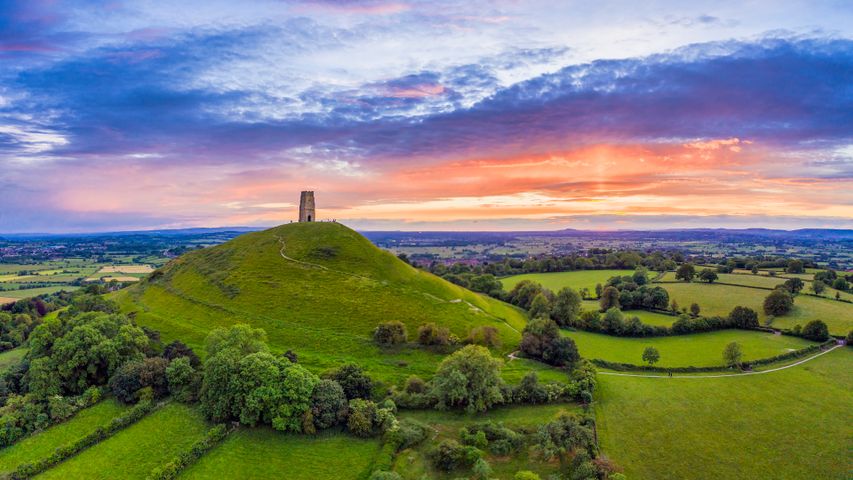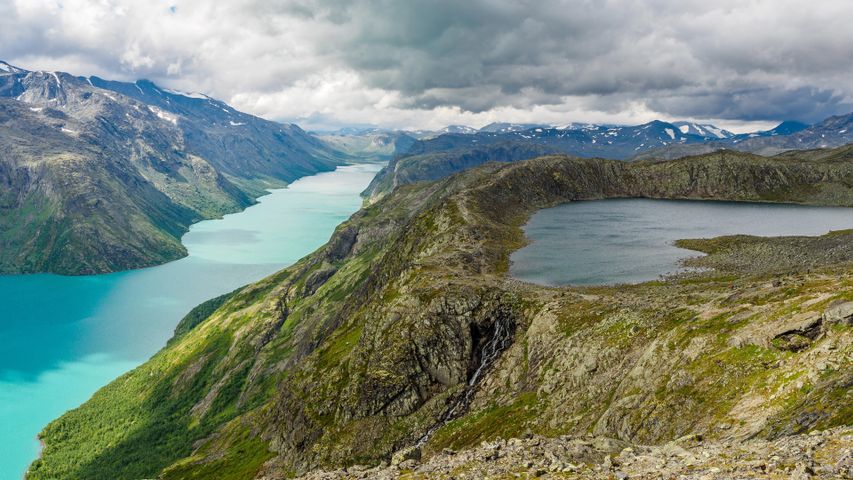Volcano Llaima with Araucaria trees in the foreground, Conguillío National Park, Chile
© Fotografías Jorge León Cabello/Getty Image
'Monkey puzzle' trees in Chile
Autumn in Chile varies widely as one travels from the Atacama Desert in the north more than 2,600 miles (4184 kilometres) south to the tip of Tierra del Fuego. Around halfway between these two extremes, you can find Conguillio National Park and the volcano Llaima at Chile's center. In March, at the start of the Southern Hemisphere's autumn, the leaves of the deciduous forest begin to turn colour and fall, and the native Chilean pine trees (Araucarias) stand out even more strikingly. Because of their distinctive appearance and the fact that they thrive in a wide range of climates, the trees became a favourite of botanists in the 19th century, who transported and cultivated them in many temperate climates around the world.
The 'monkey puzzle' trees got their common English name in the 1850s when English barrister Charles Austin observed that 'it would be a puzzle for a monkey to climb that.' Even more amazing is that these trees can live over a thousand years and are themselves living fossils, descended from a lineage stretching back 260 million years to the time of the dinosaurs.
Related Images
Bing Today Images




 St. Michael's Church Tower on Glastonbury Tor, Glastonbury, Somerset, England
St. Michael's Church Tower on Glastonbury Tor, Glastonbury, Somerset, England
 Amazon rainforest, Ecuador
Amazon rainforest, Ecuador
 Cinque Torri, Dolomiti, Cortina d’Ampezzo, Belluno, Veneto, Italy
Cinque Torri, Dolomiti, Cortina d’Ampezzo, Belluno, Veneto, Italy
 Chisos Mountains, Big Bend National Park, Texas, United States
Chisos Mountains, Big Bend National Park, Texas, United States
 Miravet on the Ebro river, Tarragona, Catalonia, Spain
Miravet on the Ebro river, Tarragona, Catalonia, Spain
 Jotunheimen National Park in Norway
Jotunheimen National Park in Norway
 Mount Hamilton, San Francisco Bay Area, California, United States
Mount Hamilton, San Francisco Bay Area, California, United States
 Torres del Paine National Park, Patagonia, Chile
Torres del Paine National Park, Patagonia, Chile


